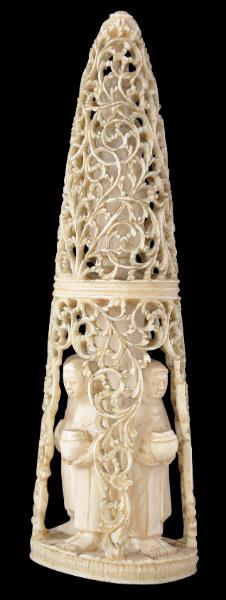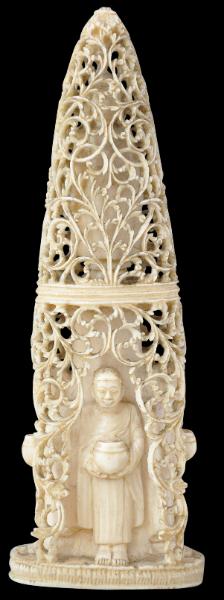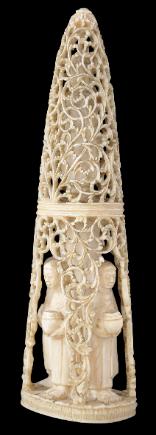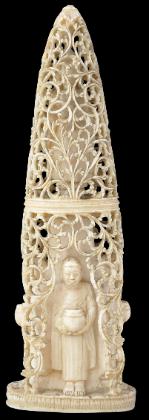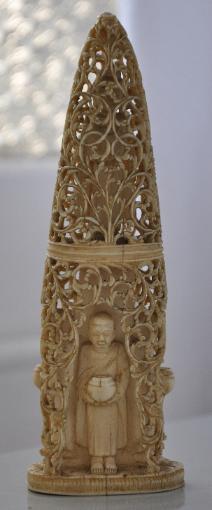
Carved Burmese Ivory Buddhas
Carved Ivory Buddha Images Amid Ivory Filigree
Burma
19th century
height: 16cm
This exceptionally finely carved ivory shows on the lower tier four images of the Buddha, each standing and holding an alms or begging bowl, separated by curtains of scrolling trellised ivory filigree. The ivory filigree completely covers the upper tier within which there is a single standing image of the Buddha, crowned and wearing robes. The piece is carved from a single piece of ivory and remarkably the craftsman has carved the upper Buddha image by accessing the middle core of the ivory by inserting his tools through the small gaps within the filigree curtain. The manner in which the standing Buddha is shown is consistent with a nineteenth century dating for Burma. (A later whole tusk commissioned in 1922-23 and now in Washington’s Smithsonian Institution and illustrated in Fraser-Lu (1994, p. 114) shows similar carving technique but with images in later form and dress.)
A similar but less refined although larger example is in the Doris Duke Collection, and illustrated in Tingley (2003, p. 88). According to Tingley, ivory was boiled in a solution to make it soft prior to carving. The design was outlined in charcoal on the ivory, which was then chiselled, filed and polished. Most of the ivory used in Burma at this time was sourced from the Shan States. Typically, elephants were not killed for their ivory; they were too valuable alive to be used for transporting logs and other heavy items. Instead, most ivory used in Burma was from elephants that died naturally.
The gift of carved ivory was a particularly merit-filled donation for a temple or monastery.
The example here is free of any chips, losses or repairs. It has a glossy, yellowing patina consistent with age.
References
Fraser-Lu, S., Burmese Crafts: Past and Present, Oxford University Press, 1994.
Tingley, N., Doris Duke: The Southeast Asian Art Collection, The Foundation for Southeast Asian Art and Culture, 2003.
Provenance
UK art market
Inventory no.: 1688
SOLD

